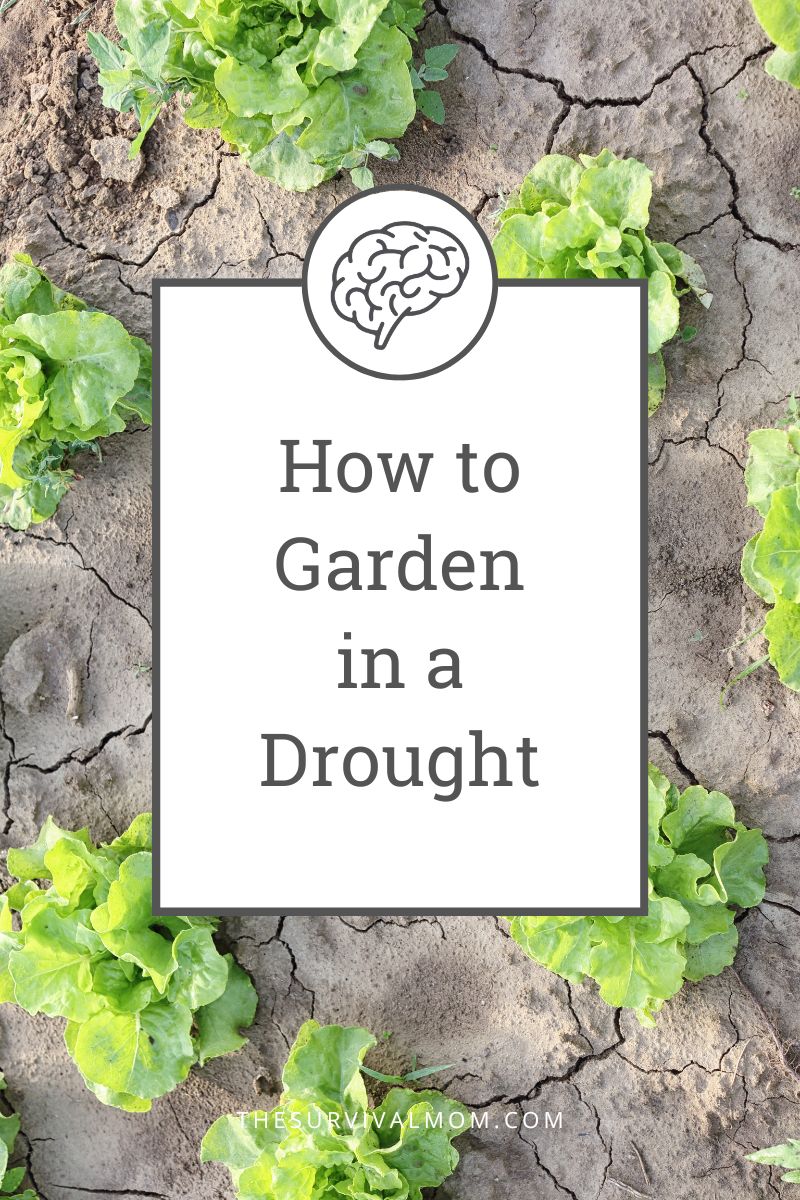Some of the links in this post may contain affiliate links for your convenience. As an Amazon associate I earn from qualifying purchases.
I have lived in many countries over the years, and have always had a vegetable garden. Not just for saving money, as many of the countries I have lived in have had what we considered dirt cheap food, but for the better quality. Nothing compares to the taste of veggies fresh from the garden. But gardening in a drought can be difficult and sometimes near impossible, but it can be done.
During the past several years, severe drought has hit a number of states here in America. Gardens are blackened and burnt, with food only coming in, grudgingly, thanks to heavy watering every other day. Watching this happen immediately took me back to two of the hardest places I have ever tried to raise food.
Kenya and Botswana.
Both places have no rain at all for months and months at a time, and then an entire year’s worth of rain in about 6 weeks. The temperatures, especially in Kenya, make even Texas heatwaves look like a refrigerator. Water sources are unreliable, even in the towns. (Here are ways to conserve water, from mundane to radical.) Yet both places are stuffed with families that grow not only enough to feed themselves, but enough to sell from their personal gardens, not from farms.
So how do people in countries like Kenya and Botswana, with their hellish temperatures and minimal rainfall, grow food?
Is your area at risk of drought?
Is your growing zone susceptible to drought? Take my super quick Gardening Self-Assessment to learn more about your growing zone and understand your garden’s unique needs. And here’s is an interesting first person account of how the California drought affected prepping.
You’ll also want to bookmark our popular master gardener tips!
A Technique for Gardening in a Drought
Residents of Kenya and Botswana use a simple technique. It involves three separate components, all of which are easily made by anyone with the ability to use a shovel, hammer or a trowel.
1. Raised beds to help with gardening in a drought
We rented our home in Botswana. In the yard behind the house was a series of concrete troughs, roughly 4 feet wide, 2 feet deep, and 15 feet long, running north to south. Concrete base, concrete sides, they looked like fish pools. In the corner of the yard was a pile of soil. Red, dry and fairly lifeless. Those concrete troughs were the raised beds. They were designed to keep every drop of water you added to the soil from disappearing into the parched earth.
You would fill them with soil during the rainy season and plant your seeds. Drainage holes about 16 inches below the top of the beds would prevent the seeds damping off, and ensure a goodly amount of water for the initial growing.
One improvement we made was to use each trough in turn as a deposit for any vegetable waste – a three inch layer of chopped vegetable waste or cow manure in the bottom of the trough would rapidly compost down and improve the soil immensely. At the end of the dry season, when you had harvested the crops, you would shovel out the soil and let the sun sterilize them for the next crop.
2. Use shade netting
Shade netting served two purposes:
- Prevented scorching
- Sheltered against the drying wind
Every 3 feet in the troughs was a hole, just the right size to hold a ¾ inch PVC pipe. Most people used branches, but the PVC pipe was more stable and used by anyone who could afford it. Horizontal pipes across the top turned the uprights into a frame, to which you would attach the shade netting, a fine mesh nylon weave. You have seen it before, if you have seen a stone building being renovated – it costs about $30 for 100 yards of 5 foot wide and cuts down the light to the beds by about 40%, according to my very old light meter.
One length of the netting is tied to the top of the frame, and one length on the Eastern and Western side which could be raised or lowered, depending on the day. Our drying evening winds invariably came from the West, so lowering the side flap and tying it down until sunset prevented a lot of wind drying of plants. Then raising it again and tying down the Eastern side, just before bed, prevented the plants being scorched by sunrise.
3. Gardening in a drought by using thread watering
Watering plants is the biggest problem during a drought. For some plants, the watering can came into play, but for others, like bean vines, pea vines, tomatoes, zucchinis, pumpkins, and squashes, we used a technique called thread watering.
Along the top of the shade netting frames for these beds ran three PVC pipes. These pipes should be capped at one end and attached to a gallon lidded bucket at the other.
To allow water to slowly reach the plants, each pipe had holes drilled in them – very small holes, less than a millimeter across. At each hole location, you would tie a coarse thread – about 6 lb. test fishing line size. This thread would then be run down to the base of the plant, pegging it into the soil with a 6” nail (or similar anchor).
Every night, you would fill up each bucket with water. The gallon of water in each bucket would then slowly flow into the PVC pipes, where it would be wicked down and distributed to the plants through the threads. This setup allows for efficient irrigation, as the single gallon of water can adequately water the entire row of plants for approximately 24 hours with minimal water loss.
Additionally, the lidded buckets did double duty. First, they prevented evaporation, ensuring the greatest volume of water is delivered to the plants. Second, they act as a deterrent against mosquitoes breeding in the standing water.
NOTE: Many readers have requested an illustration or video of the thread watering system. Sadly, none is available. However, read on as Team Survival Mom found another drip irrigation system which could help savvy gardeners in other areas who are gardening in a drought.
A Kenyan DIY Drip Irrigation System
This clever system irrigates multiple levels of plants from one water distribution point. Click on the pictures to watch videos showing how to set this up. Notice also how in the bottom right picture below shade cloth in used across the top of the structure.
Helpful Resources
Final Thoughts on Gardening in a Drought
Gardening in a drought requires creativity, but it can be done. Take my Gardening Self-Assessment to take the next steps in your gardening journey, and implement these tips for gardening in a drought to maximize the use of water in your garden.
What do you do to successfully garden in a drought?
Guest post by reader Mark M. Updated by Team Survival Mom.
I’m the original Survival Mom and for more than 11 years, I’ve been helping moms worry less and enjoy their homes and families more with my commonsense prepping advice.
















